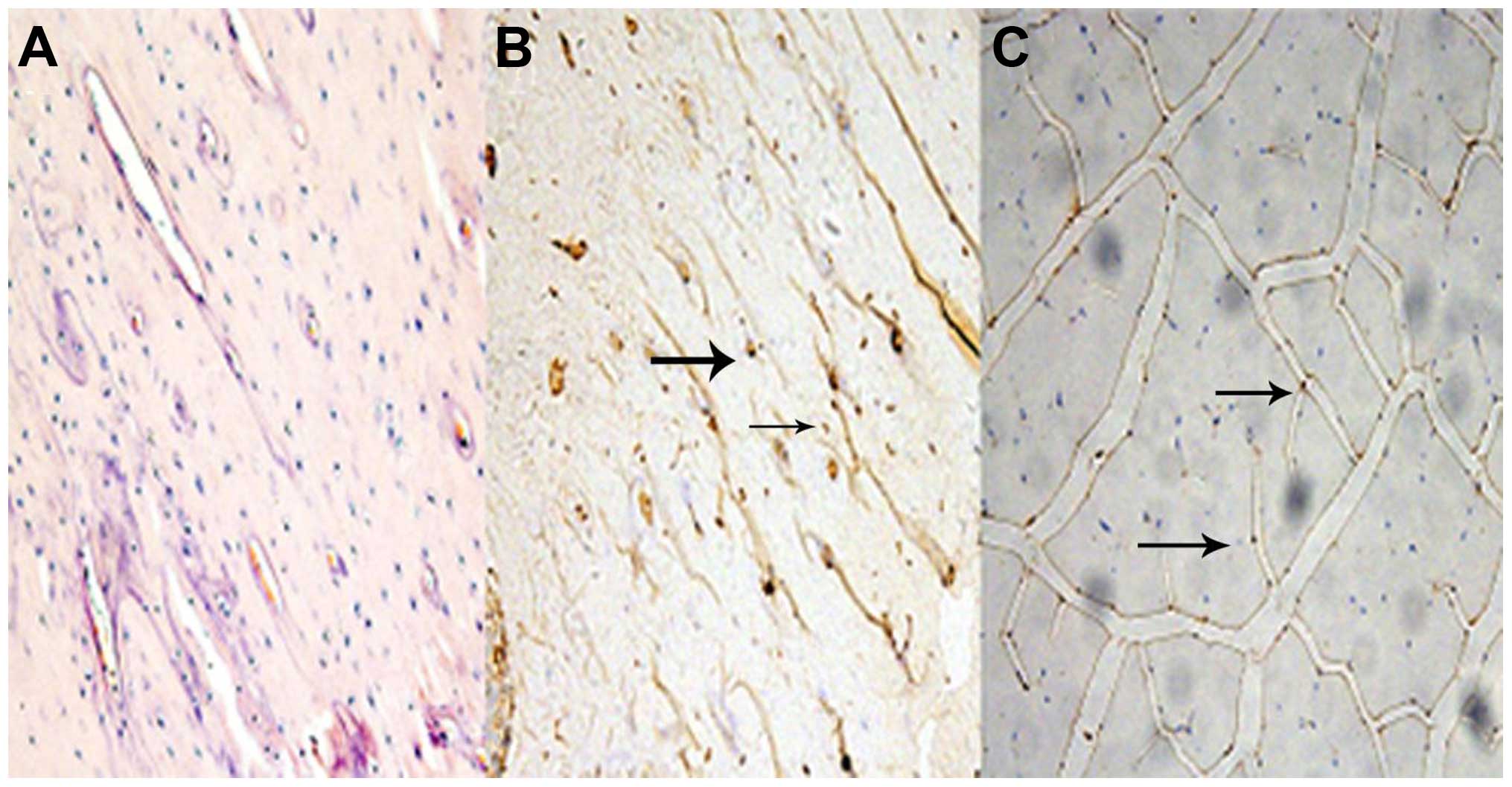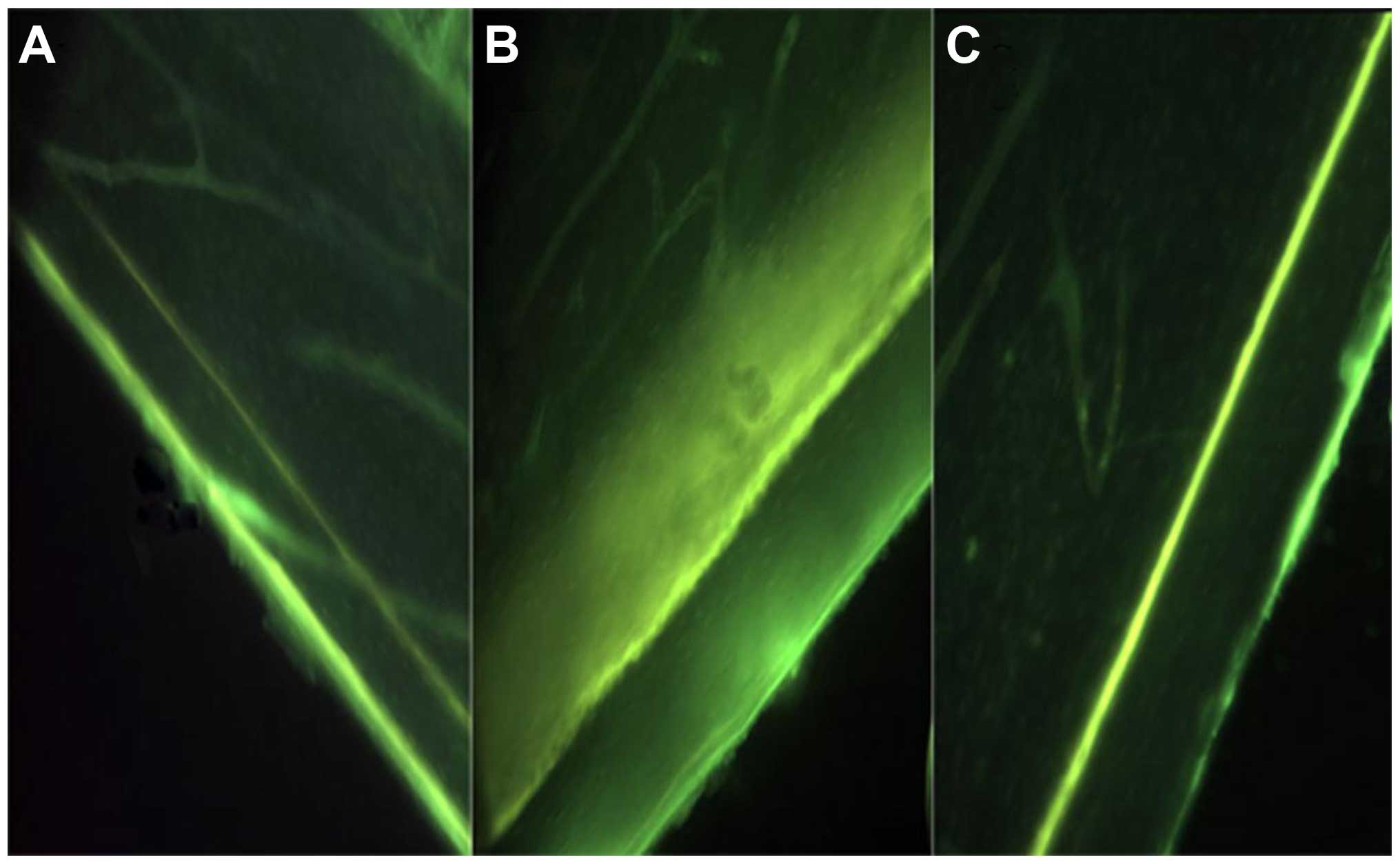Interaction between muscle and bone, and improving the effects of electrical muscle stimulation on amyotrophy and bone loss in a denervation rat model via sciatic neurectomy
- Authors:
- Published online on: March 22, 2016 https://doi.org/10.3892/br.2016.637
- Pages: 589-594
Metrics:
Total
Views: 0 (Spandidos Publications: | PMC Statistics:
)
Total PDF Downloads: 0 (Spandidos Publications: | PMC Statistics:
)
Abstract
The side-to-side difference in bone mineral content and soft tissue composition of extremities and their associations have been observed in patients with stroke and the results are inconsistent. The aim of the present study was to investigate the interaction between bone mineral content (BMC), lean mass (LM) and fat mass (FM) in the paretic extremities in patients following stroke and to determine the effectiveness of electrical muscle stimulation (EMS) following sciatic neurectomy (SN) in rats. BMC, LM and FM were measured by dual‑energy X‑ray absorptiometry in 61 hemiplegic patients following stroke. In the rat model study, groups of 10 Sprague‑Dawley rats were divided into EMS and non‑EMS subgroups. Myostatin expression and tetracycline interlabel width were measured. There were significant decreases in BMC, LM and FM in paretic limbs compared to non‑paretic limbs. Compared to non‑EMS, downregulated myostatin mRNA, and upregulated mechano growth factor (MGF) and insulin‑like growth factor 1 (IGF‑1) mRNA expression levels were observed in the EMS subgroup (P<0.05). In conclusion, muscle may have an important role in maintaining BMC. EMS‑induced muscle contraction effectively downregulated myostatin mRNA, upregulated MGF and IGF‑1 mRNA expression in muscle fiber, and mitigated amyotrophy and cortical bone loss from SN.












